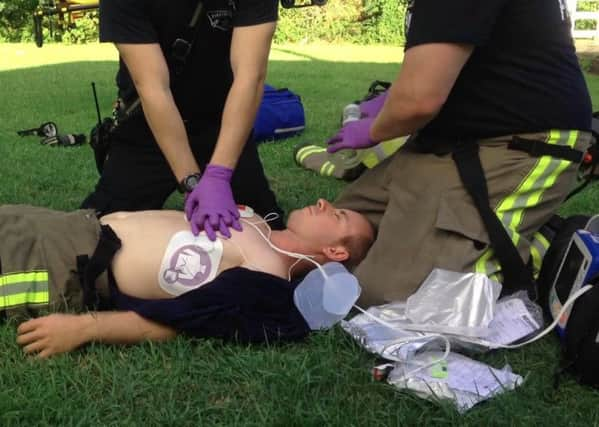Plea to learn CPR after man's life saved


The North West Ambulance Service (NWAS) spoke after a group of bystanders performed the procedure on a man who had a cardiac arrest in Wigan on May 16.
Health bosses said knowing what to do in an emergency before paramedics get to the scene can potentially be life-saving.
Advertisement
Hide AdAdvertisement
Hide AdThe service has also published a guide to CPR explaining how to carry out the resuscitation process.
An NWAS spokesman said: “The Trust was called to a man who had a cardiac arrest in Wigan town centre on May 16 and CPR was performed by a number of bystanders.
“The efforts of these people have meant that this man’s life has been saved.
“It’s so important that people in the community are able to help immediately when somebody goes into cardiac arrest as the first minutes are vital so we need people to get started on CPR before we’re able to arrive.
Advertisement
Hide AdAdvertisement
Hide Ad“Ourselves and the crew involved would like to say a big thank you to those who helped for doing a fantastic job and being so willing to get involved and stuck in.”
The ambulance service has also given Wiganers some advice to help them react should someone suffer a medical emergency.
First aiders should make sure they do not put themselves in danger by giving help and keep calm and in control at all times.
They should then shake the person’s shoulders and speak clearly, saying: “Hello, can you hear me?”
Advertisement
Hide AdAdvertisement
Hide AdBystanders should then phone 999 and ask someone to get a defibrillator.
The next step is to keep the airway clear, tilting the head back and lifting the chin.
Look for the chest rising, listen for any breath and feel the breath on your cheek or hand. Do this for around 10 seconds.
If the person is not breathing normally, CPR should then be started.
Advertisement
Hide AdAdvertisement
Hide AdFirstly, place the heel of the hand in the centre of the person’s chest. Place the other hand on top and interlock your fingers.
The CPR-giver should then position themselves so that the shoulders are directly above the hands, keep the arms straight and use their body weight to press straight down on their chest around five centimetres in depth and do two compressions every second. The arms should not be used to press down.
This should be continued until professional help arrives.
If someone is willing to do rescue breaths, do cycles of two breaths and 30 compressions.
If there is a defibrillator, open it up and follow the instructions, repeating until the ambulance arrives.